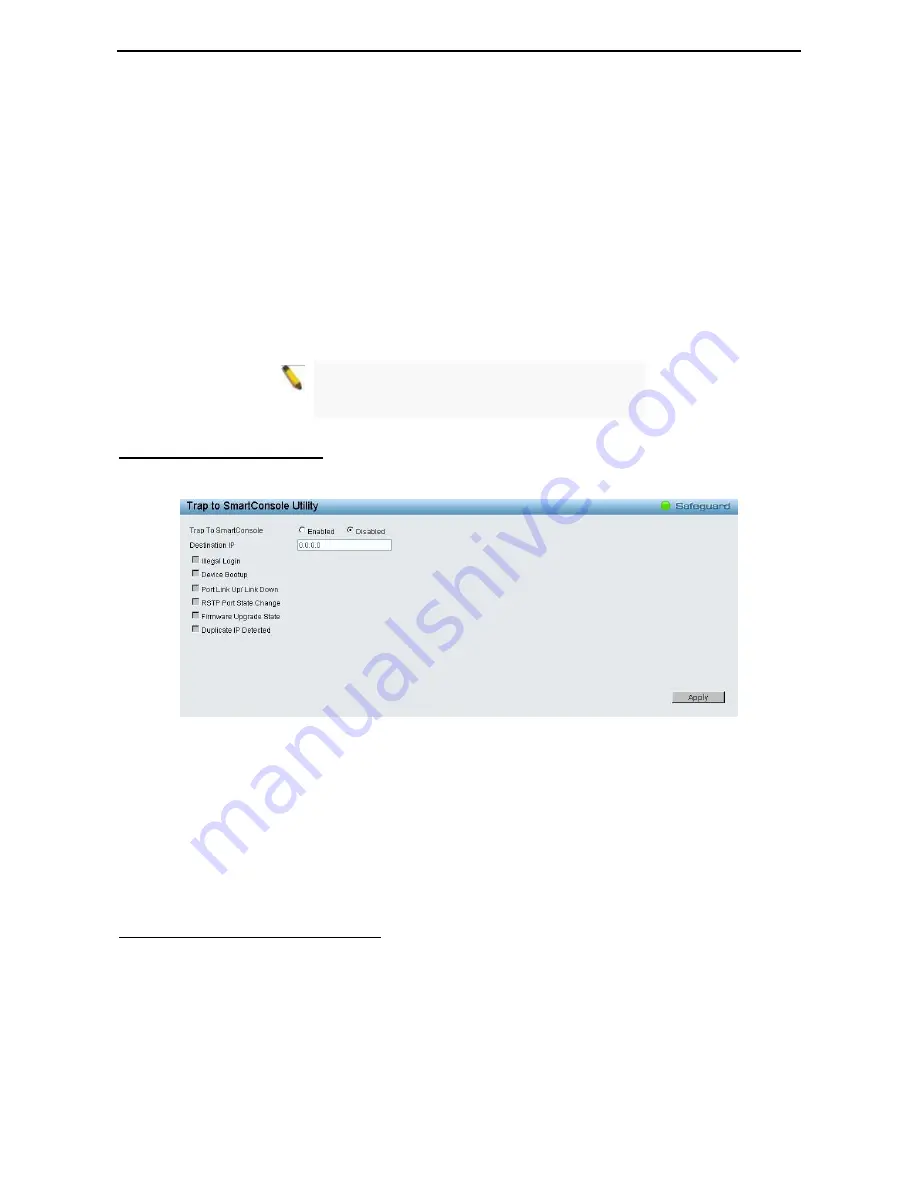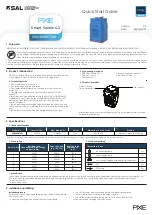
5 Configuration
D-Link Web Smart Switch User Manual
8
8
7
7
State: Indicates if PoE is enabled on the interface. The possible field values are:
Enabled: PoE is enabled on the ports.
Disabled: PoE is disabled on the ports.
Time Range: Specifies the time-based PoE function on designated port(s). Default setting is N/A.
Priority: Configure the power supply priority as “Low”, “Normal”, or “High” on designated port(s). Default is
Normal.
Power Limit: This function allows user to manually set the port power current limitation to be given to the PD.
To protect the device and the connected devices, the power limit function will disable the PoE function of the
port when the power is overloaded. Select from "Class 1", "Class 2", "Class 3", “Class 4” and "Auto" for
the power limit. "Auto" will negotiate and follow the classification from the PD power current based on the
802.3at standard. If select “User Define”, user can input the power budget (from 1 to 30W) to manually
assign an upper limit of port power budget on designated port(s).
Click Refresh to refresh the table information or click Apply to make the configurations take effects.
Note: For the PoE Port Settings table, if the
classification was shown as “Legacy PD”, it will be
classified to non-AF PD or Legacy PD.
SNMP > Trap to SmartConsole
The Trap to SmartConsole page allows user the set the difference status of SNMP notifications trapped to
the Smartconsole.
Figure 5.119 – SNMP > Trap to SmartConsole
Destination IP: Specifies the destination IP.
Illegal Login: Specifies the device to send illegal login notifications.
Device Bootup: Specifies the device to send bootup notifications.
Port Link Up/Link Down: Specifies the device to send notifications when port linkup or link down.
RSTP Port State Change: Specifies the device to send notifications when RSTP port state changes.
Firmware Upgrade State: Specifies the device to send notifications when firmware upgrades.
Duplicate IP Detected: Specifies the device to send notifications when duplicate IP were detected.
SNMP > SNMP > SNMP Global Settings
Simple Network Management Protocol (SNMP) is an OSI Layer 7 (Application Layer) protocol designed
specifically for managing and monitoring network devices. SNMP enables network management stations to
read and modify the settings of gateways, routers, switches, and other network devices. Use SNMP to
configure system features for proper operation, monitor performance and detect potential problems in the
Switch or LAN.
Managed devices that support SNMP include software (referred to as an agent), which runs locally on the
device. A defined set of variables (managed objects) is maintained by the SNMP agent and used to manage
the device. These objects are defined in a Management Information Base (MIB), which provides a standard
Содержание SmartPro DGS-1500-20
Страница 1: ......
Страница 11: ......
Страница 14: ......
Страница 30: ...5 Configuration D Link Web Smart Switch User Manual 2 25 5 Figure 5 15 User Guide Micro Site...
Страница 109: ...6 Command Line Interface D Link Web Smart Switch User Manual 104 Total Mac Addresses displayed 1 DGS 1500 28...
Страница 110: ......
Страница 111: ......
Страница 112: ......
Страница 113: ......
















































